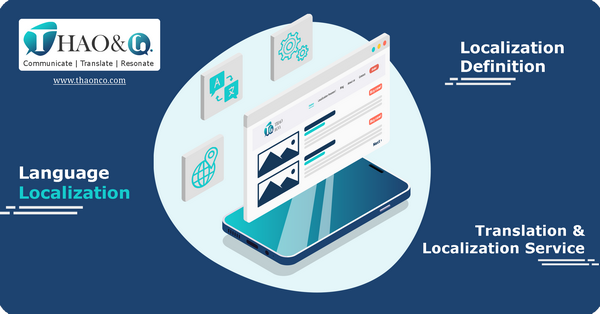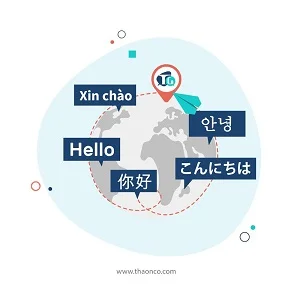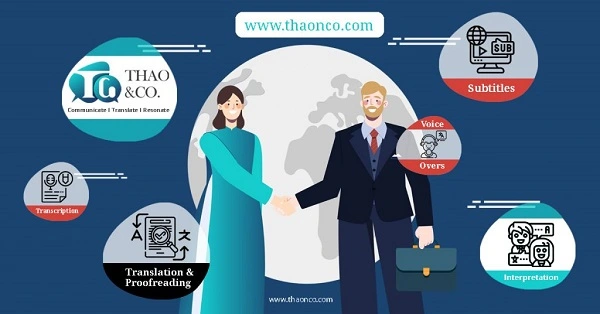Localization strategically expands a product’s reach and fosters meaningful connections with target customers, ultimately boosting sales and cultivating unwavering consumer trust.
It’s worth noting that it goes beyond mere language adaptation; it also plays a pivotal role in crafting unique experiences and fostering audience engagement within a specific country. Here’s everything you need to know about to achieve success
Localization refers to the complex process of adapting a product or content to meet the specific market demands of a particular country. This detailed process includes adjusting language, visuals, audio, layouts, dimensions, metrics, colors, cultural symbols, and other elements to create an unparalleled audience experience.
In the field of translation, it’s primary goal is to guarantee a smooth interaction and understanding for the intended audience. It makes the product feel more personal and relevant, creating a sense of closeness between a brand and its target customers.
Applicable content include:

Language localization is linguistically adapting a product or textual content to seamlessly align with a specific country’s context, culture, and legal aspects. Localization Specialists will take the main responsibility for this stage, ensuring that the content is tailored effectively to local audiences.
This process aims to create an audience experience that feels natural and understandable. At the same time, it also enhances engagement and ensures harmonious interaction with local customers, generating significant business value for the enterprise.
Depending on the content and project specifications, you may require creative translation or SEO translation:
The general translation approach focuses mainly on transferring the meaning from one language to another. General translation often neglects the significance of adapting content to the target market’s audience’s cultural and lifestyle nuances.
On the other hand, Localization focuses on adapting content and linguistic components to align with specific local requisites. This approach is designed to foster an intimate and relevant audience experience.
Functional localization involves customizing menu bar components, buttons, date formats, units of measurement, payment functionalities, purchasing attributes, and more to meet the specific requirements of regional markets.
The primary objective here is to establish a user experience that is seamlessly accessible across cultural variances, local practices, and conventions. Indeed, this special type of translation is essential to a market expansion strategy. By adopting this approach, the prodcut’s oprerational efficiency can be guaranteed while providing significant benefits to the target audience.

Interface localization is the careful customization of the user interface to align with the preferences and behaviors of the target market. This detailed process involves adjusting language characteristics, symbols, colors, images, and other elements representing a specific region.
The importance of localization lies in its ability to create a user experience that is welcoming and user-friendly. The new version brings customers a sense of familiarity so they can easily engage with the interface.
For example, specific languages like Arabic, Farsi, and others are read from right to left. The arrangement and formatting of text within the user interface can be adjusted in diverse countries to harmonize with the reading preferences of each distinct consumer segment.
Localization offers numerous benefits for businesses as they expand into global markets and extend their influence:
When McDonald’s decided to expand into the Indian market, they skillfully adjusted and customized their menu to align with the preferences and culinary expectations of the Indian population. McDonald’s introduced remarkable choices like the McAloo Tikki Burger, Maharaja Mac, and McSpicy Paneer, showcasing their ability to adapt to regional flavors. They creatively designed recipes by incorporating local products and spices such as: Paneer, aloo tikki, masala, oil seeds, cumin seeds, parsley seeds, and more suited to the palate and nutritional demands of the Indian populace.

Furthermore, McDonald’s has taken localization to a new level by customizing its user interfaces to seamlessly align with each country’s linguistic and cultural nuances. They employ translation to their websites, mobile applications, and instructional materials in local languages and skillfully adapt the interface to meet unique cultures. This feature enables users to engage quickly and conveniently purchase according to their cultural background and language preferences.
McDonald’s has successfully implemented localization strategies, resulting in a strong global brand presence in various countries worldwide. This allows them to create a seamless user experience that resonates with customers, building trust in the brand.
When Walmart ventured into the Chinese market, they faced significant obstacles in accurately translating their brand name and slogan into Chinese.
Initially, Walmart decided to keep their original name, “Walmart” for their operations in China. However, upon transliteration into Chinese characters, the resulting name sounded like “Wò ěr mǎ,” which humorously means “beating a turtle” in Chinese. This linguistic misstep resulted in widespread misunderstandings and discomfort among Chinese consumers.
As a result, Walmart launched a re-branding drive and chose the moniker “Wǒmài” as an alternative. Unfortunately, when translated into English, this moniker means “I sell” or “I trade.” The localization of this information is also misleading and does not accurately represent the true essence of the Walmart brand.

Walmart’s challenges with translation have hindered its ability to establish a strong presence and reputation in the Chinese market. As a result of these misunderstandings, customers might feel uncertain and skeptical about Walmart’s core values and business principles.
Implementing localization strategies doesn’t guarantee immediate success; it demands diligent effort and a profound grasp of the target market. To succeed, businesses must dedicate time and resources to comprehend and respect the culture and rules of the target market.
There are other great examples of localization strategy that you can learn more to gain wider perspectives.
Mastering the vital principles of localization is crucial for businesses to create exceptional user experiences, foster trust, and effortlessly penetrate new markets.
The assistance of professionals is crucial in helping a businesses develop effective localization strategies and achieve success in their target markets. At Thao & Co., we are proud to be a trusted partner for various global enterprises, providing exceptional translation and localization services for Games, Apps, Websites, Software, and other types of content with a multitude of extraordinary benefits:

At Thao & Co., our team of native experts has a profound understanding of the local culture, including the nuances of customs, habits, values, and regulations. Our translators and proofreaders are skilled at conveying your message precisely, ensuring that the localized end product resonates deeply with the cultural essence of your intended audiences.
Thao & Co.’s workflow tailors the product to seamlessly align with the target audience, fostering an exceptional experience and amplifying the chances of success in the target market.
Phase 1: Pre-translation preparations
Before the project can get started, Thao & Co. begins by setting out clearly defined goals and requirements of the content with the ultimate goal of developing a localization kit. Afterwards, we lay out a detailed execution plan, allocate resources, and provide a comprehensive cost estimate. Additionally, you can make us of our Translation Guidelines service to ensure consistency throughout the entire project.
Phase 2: Translation + proofreading
Experienced and seasoned linguists adeptly transform documents, websites, manuals, and content into the target local language. Meticulous adjustments are made to various aspects, such as product names, location names, titles, and descriptions, to align with cultural and linguistic nuances seamlessly.
Phase 3: Refinement and post-production evaluation
After the translation phase, Thao & Co. conducts a thorough review to ensure the precision and suitability of the adapted elements. We engage in a meticulous localization testing phase to evaluate how seamlessly the translation aligns with the interface and context.

Thao & Co.‘s professional team offers a wide range of comprehensive support services, including:
The key to success in localization lies in businesses understanding the core principles and choosing the best strategies. This stands as a pivotal determinant in successfully entering new markets.
For more in-depth information, please visit our Get A Quote page for a prompt consultation today!